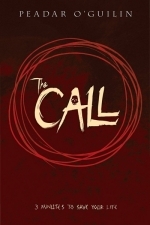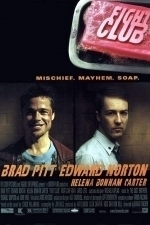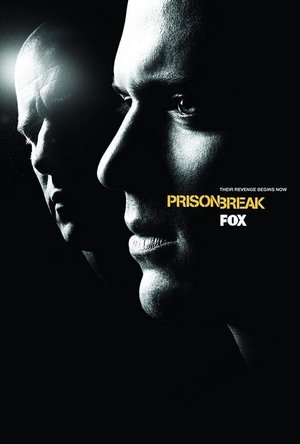
Pettersson und Findus
Games and Entertainment
App
Big play fun with Pettson and Findus! The old, inventive Pettson who lives with Findus - his...
Kirk Bage (1775 KP) rated Eurovision Song Contest: The Story of Fire Saga (2020) in Movies
Aug 6, 2020
Will Ferrell understands this of course. There is so much about the weird world of Eurovision to make fun of. The naff music, the costumes, the lost in translation moments from obscure countries trying their best and mostly failing to realise how daft they look. Enjoying this film depends on how funny you find Ferrell, not on any love of cheesy pop songs. Fortunately, I find him usually hilarious.
Not that every joke lands, or even makes sense at all. It is as bizarre as the contest itself; you just have to leave your brain at the door and go with it. There is a lot to like. Not least the adorable and consistently watchable Rachel McAdams who seems the perfect choice to play Sigrit, the girl dreaming of having the world hear her sing and strive for her spirit note. There is also an odd turn from Pierce Brosnan, who makes no effort whatsoever to make it good, and comes full circle in being so bad it’s amazing.
The joke is that they are from Iceland, who never win the thing, or ever come close. The country itself doesn’t want to win, as they would have to pay for it next year, so, after a bizarre accident where every other candidate explodes, they turn to the naive duo of Fire Saga, who are guaranteed to be a joke. And they are. But of course we are on their side, as they live the dream and go for underdog glory. What can go wrong does, and every comedy trope in the book is trotted out, along with a huge dose of sentimentality.
Naturally there is music. Ranging from the excruciating to the actually not too bad, to the hmmm, I actual like that! One highlight is a montage piece in the middle, as all contestants jam at a pre-final party – just so much fun and a totally catchy song. I am not entirely ashamed to say that it kinda got me. The pathos leading up to the climax hit me in the vulnerable feels, as I lay on a Sunday morning helpfully hung-over and tender. This is the way to watch it, I feel, or, you know, with young kids, who will lap up the silliness and talent show sensibility.
Look, it’s terrible on any artistic or serious level. The script is a mess, the direction could have been phoned in by a chimp, and the plot serves to say nothing new or inciteful, but it doesn’t matter. Watch it, have a chuckle and then throw it away. I can think of many less innocent comedies that are far less worthy of attention. And at the very least, there is a bit with elves that had me pressing pause till I got all my laughs out.
Pick a day when you have no energy to fight the world or string two thoughts together and just enjoy it.
Decinemal Rating: 63

The Call
Book
THREE MINUTES You wake up alone in a horrible land. A horn sounds. The Call has begun. TWO...

IBM and the Holocaust
Book
"IBM and the Holocaust" promises to reveal the international company's strategic alliance with Nazi...

The Kid by Kaitlyn Aurelia Smith
Album Watch
In 2017, the musical term 'electronic' is nearly obsolete given the ubiquity of computerized...
electronic

Green Screen by Do Ink
Education and Photo & Video
App
The #1 Green Screen app for the iPad in Education, now available for the iPhone too! Green Screen by...
DaveySmithy (107 KP) rated Fight Club (1999) in Movies
Dec 3, 2024
The story is told through the eyes of the unnamed narrator (Norton), a white-collar worker trapped in a monotonous life. Crippled by insomnia and a desperate longing for purpose, his mundane existence takes a dramatic turn when he crosses paths with Tyler Durden (Pitt), a magnetic, anarchic soap maker. Together, they form the titular fight club—a raw, underground outlet for men to vent their frustrations by literally beating them out of each other. What begins as an unconventional form of therapy soon spirals into a chaotic and dangerous movement, leading the narrator down a path of self-destruction and shocking revelations.
Edward Norton delivers a career-best performance as the narrator, capturing the character’s descent into madness with unnerving precision. His dry wit and self-deprecating humor make him relatable, even as his actions become increasingly unhinged. But it’s Brad Pitt who truly steals the show as Tyler Durden. Charismatic, unpredictable, and dripping with swagger, Pitt embodies the fantasy of rebellion and freedom that so many viewers secretly crave. Together, the two actors create a mesmerizing dynamic, with Tyler representing everything the narrator wants to be—and fears he might become.
Helena Bonham Carter rounds out the core cast as Marla Singer, a nihilistic wildcard who both disrupts and grounds the narrator’s chaotic journey. Her chemistry with Norton is as compelling as it is unconventional, adding a layer of emotional complexity to an otherwise hyper-masculine narrative.
What sets Fight Club apart is its fearless critique of modern society. It skewers consumerism, masculinity, and the emptiness of the so-called “American Dream,” forcing viewers to confront uncomfortable truths about their own lives. Fincher’s direction is sharp and unrelenting, with the film’s gritty visual style perfectly complementing its nihilistic tone. The innovative use of CGI, fourth-wall-breaking moments, and hauntingly effective cinematography by Jeff Cronenweth keep the audience on edge, unsure of what to expect next.
Yet, Fight Club is not without flaws. Its provocative themes can feel overly blunt at times, and some viewers might find its violent and anarchistic undertones alienating. Additionally, while the infamous plot twist is masterfully executed, it risks overshadowing the film’s deeper messages upon rewatch.
The soundtrack, anchored by The Dust Brothers’ industrial score and the unforgettable use of The Pixies’ “Where Is My Mind?” in the climax, elevates the film to iconic status. These elements, combined with razor-sharp dialogue and endlessly quotable lines, solidify Fight Club as a masterpiece of late-90s cinema.
While it may not be for everyone, Fight Club is a bold, daring, and unforgettable experience that challenges societal norms and forces introspection. It’s an audacious 9/10 film—flawed but brilliant, much like the chaos it portrays.
Bird (1704 KP) rated Prison Break in TV
Nov 29, 2024
The standout feature of Prison Break is undoubtedly its core premise. The idea of a structural engineer, Michael Scofield (played by Wentworth Miller), intentionally landing himself in prison to break out his falsely accused brother, Lincoln Burrows (Dominic Purcell), is fascinating. The execution of Michael’s plan, complete with hidden clues in his tattooed body map, is both ingenious and fun to watch unfold. The first season, in particular, excels at building tension as Michael carefully navigates the treacherous world of Fox River Penitentiary, laying the groundwork for the escape. It’s a slow burn at times, but the payoff is worth it.
The cast is another highlight. Wentworth Miller’s calm and calculated performance as Michael is captivating, and Dominic Purcell brings a solid, if sometimes overly stoic, presence to Lincoln. Robert Knepper steals the show as Theodore "T-Bag" Bagwell, delivering a performance that’s equal parts chilling and oddly charismatic. Supporting characters like Sucre (Amaury Nolasco) and Sara Tancredi (Sarah Wayne Callies) add warmth and heart to balance the often dark and gritty tone of the series.
However, the show isn’t without its flaws. While the first season is nearly airtight in its storytelling, later seasons can feel uneven. The second season’s shift to a manhunt format is exhilarating but occasionally stretches believability, with some plot twists feeling more like conveniences than organic developments. As the series progresses, the introduction of larger conspiracies and shadowy organisations adds scale but also detracts from the grounded tension that made the first season so compelling. By the time you reach the third and fourth seasons, the narrative occasionally veers into melodrama and over-the-top scenarios, which may pull some viewers out of the experience.
The pacing can also be hit or miss. While some episodes are packed with heart-pounding tension, others feel like filler, particularly in the later seasons. The show sometimes leans too heavily on cliffhangers, which can feel manipulative rather than earned. Additionally, while the cast is strong overall, some characters, like Lincoln, can come across as one-dimensional at times, and a few storylines feel underdeveloped or rushed.
That said, Prison Break is undeniably entertaining. Its gritty atmosphere, clever plotting, and high-stakes drama make it a standout among action-thrillers. The relationships between characters, particularly Michael and Lincoln’s unshakable brotherly bond, give the series emotional weight. Even with its flaws, the show’s twists and turns keep you engaged, and there’s a palpable sense of satisfaction when long-brewing plans come to fruition.
In summary, Prison Break is a fantastic watch, especially for fans of crime dramas and action-packed thrillers, though it occasionally falters under the weight of its ambition. It’s an 8/10 for me—hugely enjoyable, if not always perfect. While it may not stick the landing as well as it starts, the journey is more than worth taking.

The China Factor: Leveraging Emerging Business Strategies to Compete, Grow, and Win in the New Global Economy
Wiley, Amy Karam and Ken Wilcox
Book
The Innovation of Globalization proven strategies to succeed and out-compete emerging competition...



